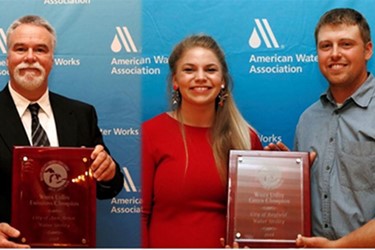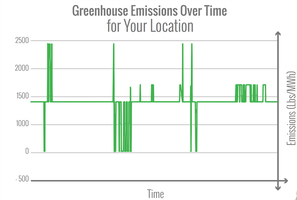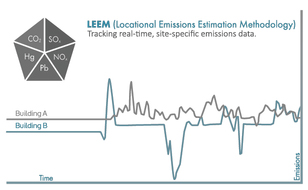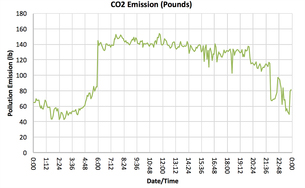Great Lakes Competition Rewards Environmental Stewardship


The Great Lakes Basin Water Utility Energy Challenge has announced five winners in its inaugural competition among water utilities to reduce emissions associated with energy generation to support their plant operations. The 2018 winners included a variety of utilities ranging from small-town to large-metropolitan-area systems, competing in five major areas:
- Water Utility Emissions Champion: City of Ann Arbor, Michigan
- Water Utility Green Champion: City of Bayfield, Wisconsin
- Best Pilot Project: Great Lakes Water Authority (GLWA), Detroit, Michigan
- Technical Leader: City of Highland Park, Illinois
- Carbon Reduction Leader: Onondaga County Water Authority (OCWA), North Syracuse, New York
The competition measured the environmental impacts resulting from their changes in the utilities’ approaches to energy consumption and the associated emissions of mercury, lead, carbon, and nitric oxide.
It Takes A Village
This year’s event drew support from a broad spectrum of environmental interest groups associated with the Great Lakes watershed, which represents 20 percent of the world’s surface freshwater. The competition was a collaborative effort between the AWWA and The Great Lakes Protection Fund (GLPF), with GLPF providing the funding for the program. The GLPF is a private, non-profit organization that helps water-related utilities test and fund the application of new technologies in water treatment with the goal of protecting and restoring the ecological health of the Great Lakes.
The program was also supported by partners from a variety of organizations with ecological interests: E2i, Healthy Urban Waters at Wayne State University, CDM Smith, Growth Capital Network, and the Great Lakes and St. Lawrence Cities Initiative.
The competition promoted the use of several free software resources aimed at improving environmental performance in water treatment. The Locational Emissions Estimation Methodology (LEEM) software technology is designed to help energy managers track, control, and reduce emissions resulting from electricity generation. The Polluting Emissions Pump Station Optimization (PEPSO) software package helps large water distribution systems optimize performance to meet cost and environmental objectives. The two programs are integrated with each other for data sharing and seamless ease of use. Interested water utilities can test drive the LEEM program or download the PEPSO programs upon request.

Track Emissions

Manage And Reduce Emissions

Report Reductions In Emissions
Making A Measureable Ecological Impact
By using LEEM data to monitor and manage their pollution emissions, the five finalists in the competition were cumulatively able to reduce carbon emissions by 1.5 million pounds of carbon (equivalent to the annual volume generated by 141 households), and nearly 10 pounds of mercury (equivalent to the mercury in 52,000 pounds of fish from the Great Lakes).
"By using innovative technologies to protect the Great Lakes, the WUEC winners are a testament to the creativity and innovation needed to run a successful water utility today,” said David Rankin, vice president of programs for GLPF. “With this ambitious start, when they scale up, these water utilities could easily mitigate more than five times that amount."
It Pays To Innovate
Each of the winners received a monetary reward in addition to public recognition and personal satisfaction for a job well done. The City of Ann Arbor received $20,000 for its emission reduction efforts. The City of Bayfield earned $10,000 for its green efforts. Each of the other three winners earned $2,000 for their efforts.
The Ann Arbor utility is no stranger to water treatment competitions on the national stage. They finished fourth nationally in the water taste-test competition at the 2017 ACE Conference in Philadelphia, sponsored by the AWWA. The utility was also honored as the best water in Michigan during its annual state conference in 2016.
The City of Bayfield achieved its reduction in energy use, cost, and emissions by manipulating the time that energy was pumped, in order to correspond with their energy provider’s lower emission periods of electrical generation.
“We are really excited with the breadth of the WUEC winners. They represent a wide range of communities, from small towns to large urban areas, and epitomize the next generation of cutting edge water utilities,” noted David LaFrance, CEO of the AWWA. “The winners proved that all utilities can use the cleanest energy to deliver safe drinking water to their customers and significantly reduce the associated emissions of lead, mercury, carbon, and nitric oxide.”
